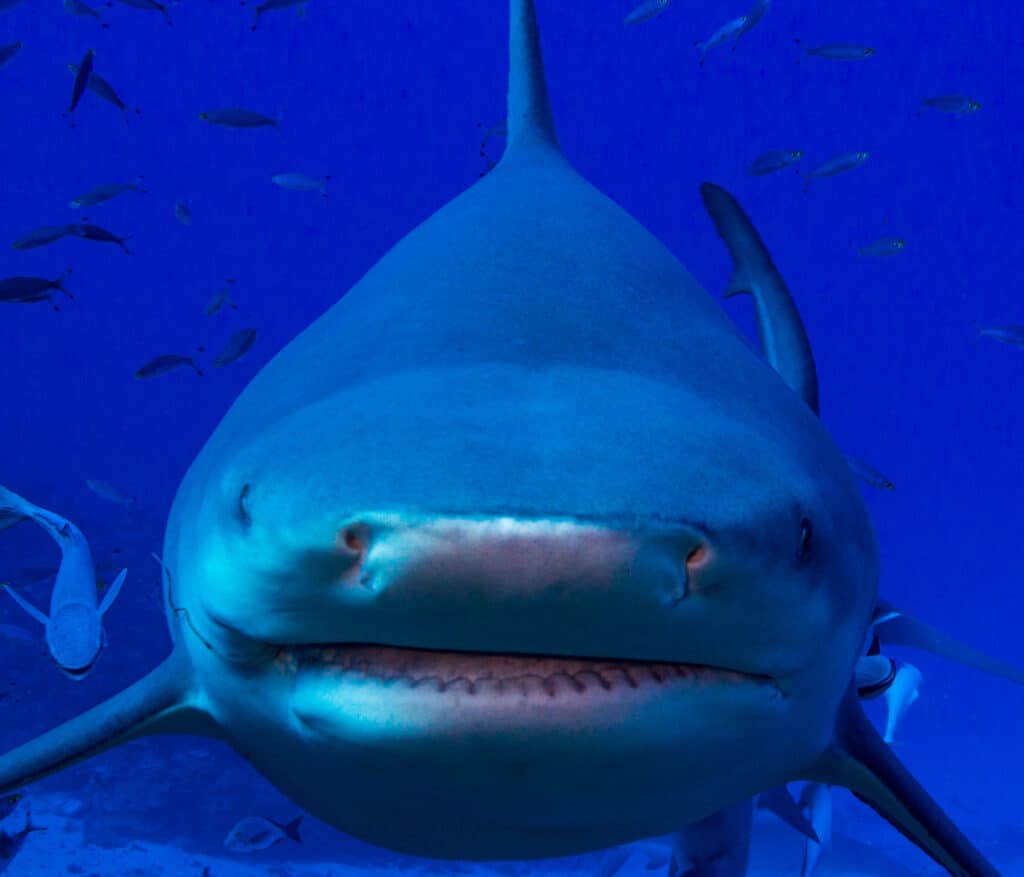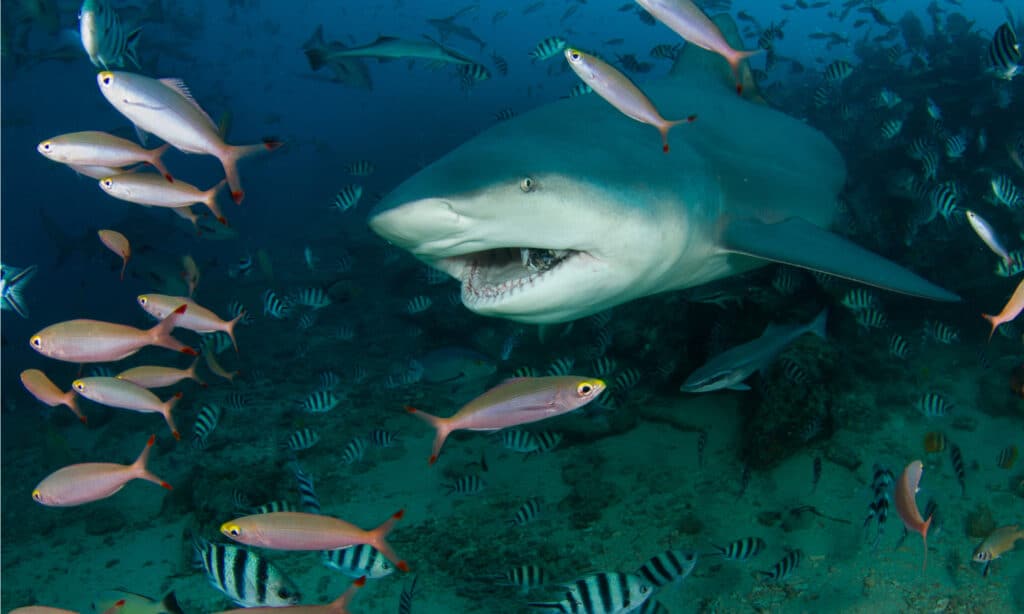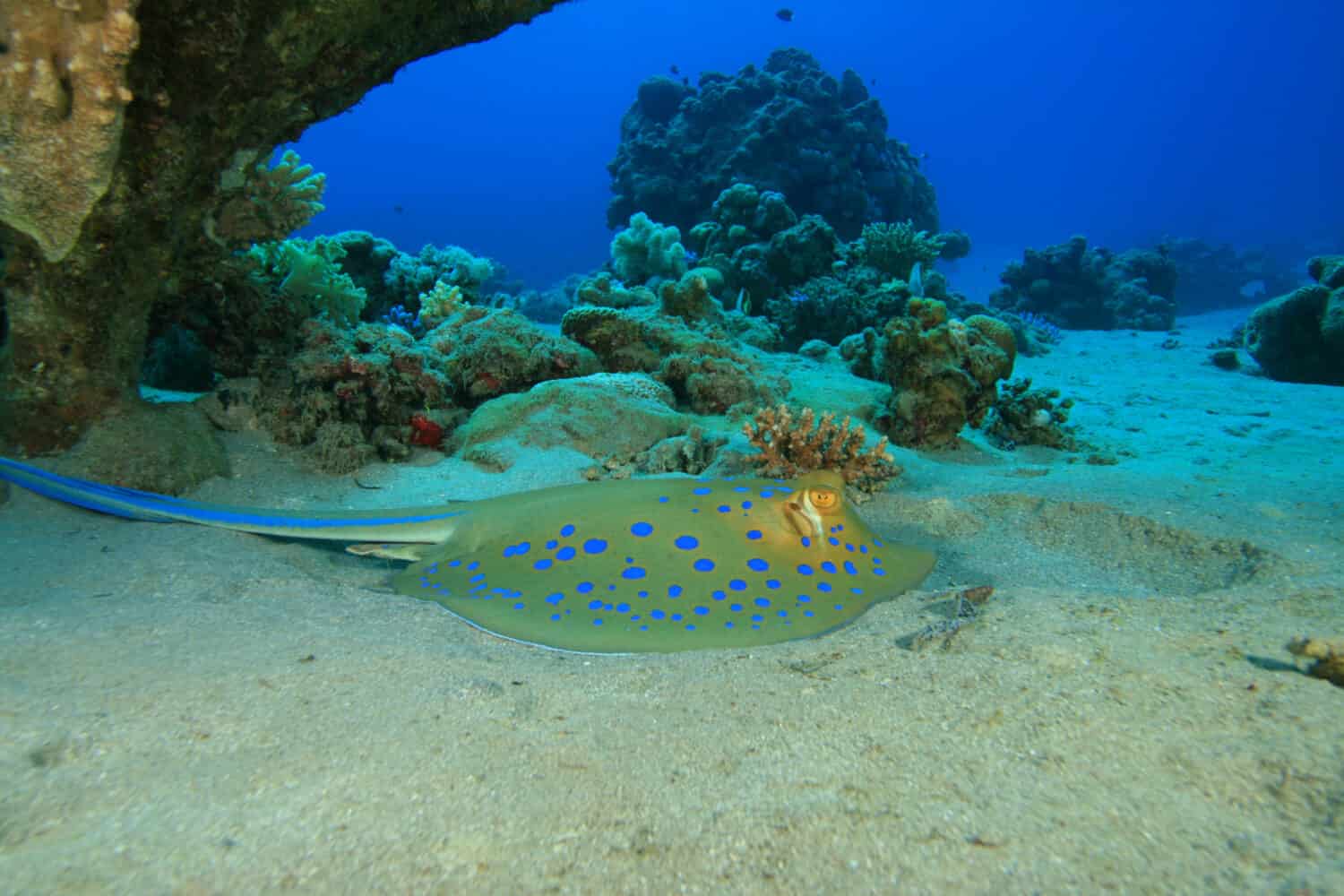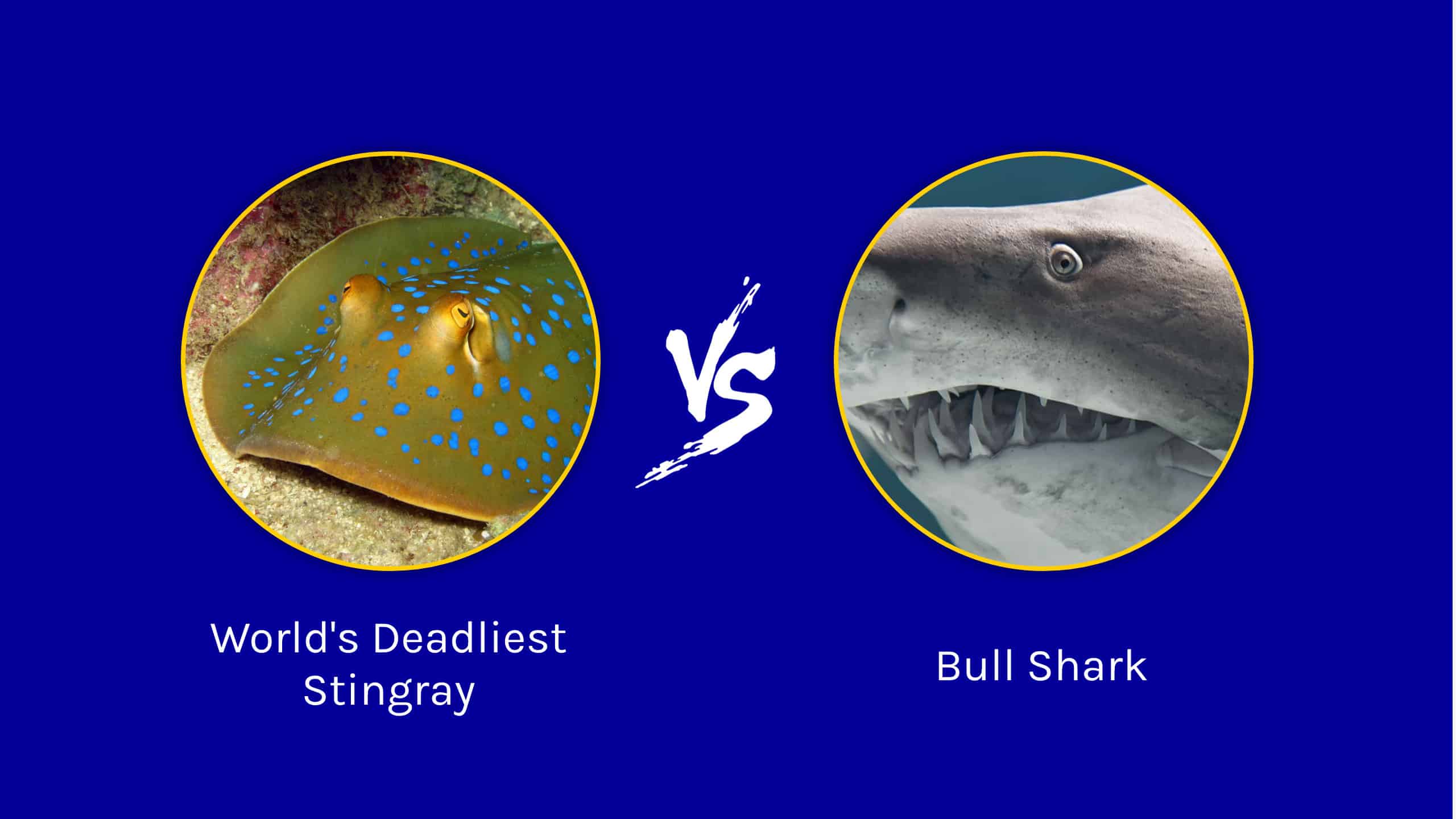We have the world’s deadliest stingray fighting a bull shark in this deep sea battle. These fierce competitors are both deadly in their own ways. The stingray, with a venomous tail spine, defends itself with precision. On the other hand, the bull shark is known for being aggressive and eating prey as large as dolphins. Who will have the advantage in today’s matchup? There’s always something to learn from sea creatures and their battle-tested survival tactics. Follow along to find out who emerges victorious in this deep-sea encounter.
World’s Deadliest Stingray

The venomous tail spine helps protect the blue-spotted stingray from predators like sharks.
©Paranee Hansakul/Shutterstock.com
The world’s deadliest stingray is the blue-spotted stingray; it’s the most venomous among all stingray species. Unlike other stingrays who like hiding on the ocean floor, this species doesn’t like being covered in sand. Native to the Indo-Pacific region, this stingray boldly displays vibrant blue spots and uses a venomous tail spine for defense.
Bull Shark

Using a head-butt attack, bull sharks eat all sorts of prey, including dolphins.
©Michael Gomes/Shutterstock.com
Bull sharks are aggressive predators that head-butt their prey before attacking. These sharks hunt both during the day and at night. They possess special adaptations in their kidneys and glands near their tails to retain salt in their bodies. While they primarily inhabit shallow, warm ocean waters worldwide, they can swim into freshwater rivers and tolerate brackish water. Their diet primarily consists of fish, but that’s not all they eat. As opportunistic feeders, they eat dolphins, sea turtles, and even other sharks. There are even videos of bull sharks fearlessly attacking a herd of hippos. And for this animal battle, they might be feasting on a venomous stingray.
Round 1: Size

Living up to 16 years, bull sharks are massive predators who can reach 11.5 feet in length.
©chatchai kusolsinchai/Shutterstock.com
The bull shark has an impressive size, measuring between 7 to 11.5 feet long and weighing around 200 to 500 pounds. This hefty sea creature has an average life span of 16 years when living in the wild. Bull sharks are often seen in groups called schools or shoals, displaying a social nature within their marine communities. With their powerful build and predatory nature, they’ve earned a reputation as one of the most fearsome creatures in the ocean.
In the size department, the stingray is at a serious disadvantage. It would take about 20 blue-spotted stingrays to compete with the weight of a full-grown bull shark. The blue-spotted ray can grow up to 14 inches across and 31 inches long. It has a disc width of 2 inches and only weighs 11 pounds. Luckily for this stingray, battle decisions don’t always come down to size.
Round 2: Skills

The stingray’s venomous spines sit at the base of their tail.
©Greens and Blues/Shutterstock.com
Blue-spotted stingrays have venomous spines positioned at the base of their tails, which serve as a defensive mechanism against potential predators. These spines are not only sharp but also contain a potent venom. With the ability to move their tails rapidly in a whip-like motion, these stingrays can accurately target and sting threats. And venom isn’t the only skill that could help the stingray win this fight.
Blue-spotted stingrays also have an amazing ability to sense everything in their surroundings, all thanks to electroreception. They have specialized sensory organs, called the ampullae of Lorenzini, which are key to their super-sensing skills. The females, in particular, are really good at this. It helps them to pick out potential mates and to spot incoming predators, like hammerheads, and other sharks.
If the bull shark wants to attack the stingray, it’ll bump into it first. Bull sharks are notorious for their bump-and-bite technique when attacking their prey. Using their blunt snouts, they head-butt their victims before going in for the kill. There’s a method to this move. When they head-butt their prey, they can investigate what they’re up against before biting into it. Once they know how to proceed, bull sharks are relentless. They keep biting and tackling their prey until the fight’s won.
Round 3: Behavior and Habitat

Blue-spotted stingrays are shy and avoid confrontations whenever possible.
©Greens and Blues/Shutterstock.com
A blue-spotted stingray wouldn’t pick a fight with a bull shark. This species chooses flight over fight in most situations, as seen when they swim away from divers. Typically, the blue-spotted stingray is found alone or in small groups. Using strong pectoral fins, it can swiftly maneuver through shallow waters above reef flats.
Blue-spotted stingrays are shy, and bull sharks are known for being unpredictable and aggressive. These sharks have a global presence; you can find them cruising the coastal waters all around the world. They particularly love hanging out in shallow areas along tropical shorelines, where they feel at home.
Who Wins?
The bull shark wins the deep sea battle. Its hunting skills, aggressive nature, and strength give it the winning edge. Despite the stingray’s ability to deliver a venomous sting, it’s outpowered in this animal battle, and it won’t be able to hide either. Like other sharks, bull sharks have an incredible sense of smell, which is handy when locating their next meal. And in this case, that meal is going to be a large stingray.
Unfortunately for the stingray, escape won’t be possible. Despite their seemingly slow movements while cruising the ocean floor, bull sharks can reach impressive speeds of up to 11 miles per hour. This is plenty of speed to close in on a large stingray, even if they use their electroreception to see the shark coming.
Thank you for reading! Have some feedback for us? Contact the AZ Animals editorial team.








